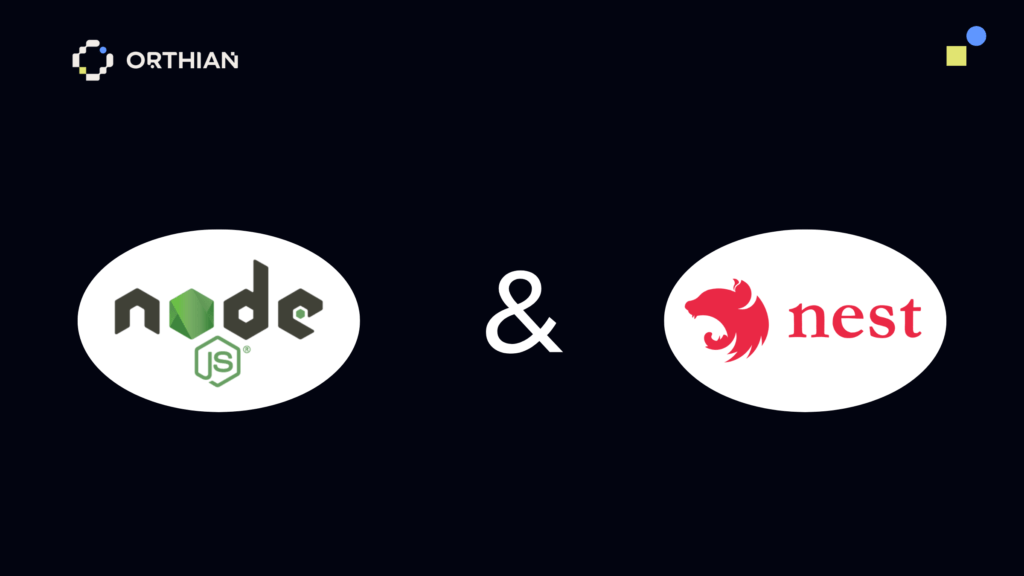Học những gì Node.js là, tại sao các nhà phát triển lại chọn nó cho các dịch vụ thời gian thực và vi mô, và làm thế nào NestJS, khuôn khổ TypeScript hàng đầu của nó, hợp lý hóa việc phát triển phần phụ trợ có khả năng mở rộng.
JavaScript đã thống trị trình duyệt từ lâu. Node.js mở rộng phạm vi hoạt động lên máy chủ. Kể từ khi ra mắt trên engine V8 của Chrome vào năm 2009, Node.js đã cách mạng hóa việc phát triển back-end với mô hình hướng sự kiện. Để quản lý độ phức tạp ở quy mô lớn, các nhà phát triển đã xây dựng các framework trên nền Node.js. NestJS đã nổi lên như một sự lựa chọn hàng đầu, kết hợp TypeScript thiết kế mô-đun và các mẫu lấy cảm hứng từ Angular.
Cái nhìn sâu sắc nhỏ
Kiến trúc không đồng bộ luồng đơn của Node.js có khả năng xử lý hàng nghìn kết nối đồng thời với chi phí tối thiểu.
1. Node.js là gì?
1.1 Định nghĩa và Lịch sử
- Node.js là một môi trường thời gian chạy thực thi JavaScript bên ngoài trình duyệt
- Được xây dựng trên nền tảng V8 của Google và được Ryan Dahl phát hành vào năm 2009
- Cho phép bạn viết mã phía máy chủ trong JavaScript sử dụng cùng một ngôn ngữ cho cả máy khách và máy chủ
1.2 Ưu điểm chính
- Ngôn ngữ thống nhất: Sử dụng JavaScript đầu cuối cho giao diện người dùng và phần cuối
- I/O không chặn: Xử lý nhiều hoạt động song song thông qua vòng lặp sự kiện
- Hệ sinh thái khổng lồ: Hơn một triệu gói trên NPM (Trình quản lý gói Node)
- Phát triển nhanh chóng: Không có bước biên dịch và tải lại nóng thông qua tools như nodemon
1.3 Những hạn chế chung
- Không lý tưởng cho các tác vụ đòi hỏi nhiều CPU: Bản chất luồng đơn có thể làm tắc nghẽn quá trình tính toán nặng
- Độ phức tạp của lệnh gọi lại: Được giảm thiểu bằng Promises và async await, nhưng vẫn cần xử lý lỗi cẩn thận
- Sự thay đổi về chất lượng bao bì: Sự phát triển nhanh chóng của hệ sinh thái có nghĩa là một số thư viện thiếu sự trưởng thành
2. Tổng quan về các Framework Node.js phổ biến
| Khung | Ảnh chụp nhanh |
|---|---|
| Thể hiện | Cơ sở tối giản không có ý kiến cho nhiều khuôn khổ khác |
| Koa | Lightweight sử dụng async await ngay khi xuất xưởng |
| Fastify | Các tính năng đầy đủ được tích hợp, chẳng hạn như CMS, hỗ trợ thời gian thực và IoT |
| Total.js | Cơ sở tối giản, không có chính kiến cho nhiều khuôn khổ khác |
| Vòng lặp lại | Xác thực dựa trên lược đồ thông lượng cao |
Cái nhìn sâu sắc nhỏ
Express vẫn là tiêu chuẩn thực tế, nhưng các dự án chú trọng hiệu suất thường chọn Fastify hoặc Koa.
3. NestJS là gì?
3.1 Tổng quan
- NestJS là một nền tảng Node.js tiên tiến được phát hành vào năm 2017
- Đòn bẩy TypeScript các trình trang trí và tiêm phụ thuộc để xây dựng các ứng dụng phía máy chủ có thể mô-đun hóa, có thể kiểm tra và mở rộng
3.2 Nguyên tắc thiết kế Những hạn chế chung
- Tính mô-đun: Tổ chức các tính năng thành các mô-đun riêng biệt để rõ ràng và tái sử dụng
- Tiêm phụ thuộc: Container tích hợp tạo ra sự kết nối lỏng lẻo
- API dựa trên trình trang trí: Cú pháp khai báo rõ ràng cho các bộ bảo vệ định tuyến và phần mềm trung gian
- Tính linh hoạt: Hoạt động trên Express hoặc Fastify
NestJS mang lại cấu trúc cấp doanh nghiệp cho Node.js, lý tưởng cho các nhóm lớn và các miền phức tạp.
4. Kiến trúc cốt lõi và các thành phần của NestJS
- Các mô-đun nhóm các bộ điều khiển liên quan và các dịch vụ nhà cung cấp lại với nhau
- Bộ điều khiển xử lý các yêu cầu đến và trả về phản hồi
- Dịch vụ nhà cung cấp chứa logic kinh doanh được đưa vào bộ điều khiển
- Phần mềm trung gian và bảo vệ xử lý các yêu cầu trước khi bộ điều khiển triển khai xác thực và ủy quyền
- Các đường ống và bộ chặn chuyển đổi và xác thực dữ liệu, xử lý các mối quan tâm xuyên suốt
CLI của NestJS tự động xây dựng các thành phần này, giúp tăng tốc quá trình thiết lập dự án.
5. Các trường hợp sử dụng trong thế giới thực
- API RESTful và các dịch vụ vi mô sử dụng mô-đun dịch vụ vi mô NestJS với các trình môi giới tin nhắn như Kafka hoặc RabbitMQ
- Các ứng dụng thời gian thực như trò chuyện hoặc hệ thống thông báo qua WebSockets
- Hệ thống doanh nghiệp, bao gồm CRM, ERP và tools nội bộ, với DI mạnh mẽ và mã mô-đun
- Phần phụ trợ cho các SPA và ứng dụng di động phục vụ giao diện người dùng React, Angular hoặc React Native
6. Tại sao nên chọn NestJS? Lợi ích chính
- TypeScript đầu tiên: Tận dụng tính năng gõ tĩnh và tự động hoàn thành của trình soạn thảo
- Cấu trúc có thể mở rộng: Thiết kế mô-đun đơn giản hóa cơ sở mã lớn
- Khả năng kiểm tra: Hỗ trợ tích hợp cho các bài kiểm tra đơn vị và tích hợp Jest
- Tùy chọn hiệu suất: Đổi Express lấy Fastify để tăng thông lượng
- Hệ sinh thái phong phú: Tích hợp chính thức cho xác thực GraphQL WebSockets, lưu trữ đệm và nhiều tính năng khác
Cái nhìn sâu sắc nhỏ
Kiến trúc của NestJS giảm thiểu mã lệnh chuẩn và cải thiện khả năng bảo trì, điều này rất quan trọng đối với các dự án dài hạn.
7. Kết luận
Node.js trao quyền JavaScript khắp mọi nơi, và NestJS đưa nó đi xa hơn với các mô hình doanh nghiệp và TypeScript an toàn. Cho dù bạn đang xây dựng một API hoặc một nền tảng dịch vụ vi mô lớn, NestJS cung cấp cấu trúc và tools bạn cần.
Liên hệ Orthian để được tư vấn chuyên môn, thiết kế kiến trúc và chìa khóa trao tay NestJS giải pháp phù hợp với doanh nghiệp của bạn.
Kiểm tra thêm kiến thức về những khác biệt khác bên dưới:
Java và JavaScript: Tên gọi tương tự, thế giới khác nhau
TypeScript và JavaScript: Bạn nên sử dụng cái nào cho dự án của mình?
PHP là gì? Tìm hiểu về ngôn ngữ lập trình web phổ biến nhất và các framework hàng đầu






